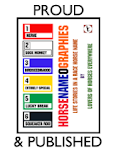My Springtime Horse Evaluation Ritual
Ahhhh, daylight savings is here along with spring-like temps. Pear trees, red buds, daffodils, soon azalea blooms, and finally some green grass starting to grow. Already I have spring fever! I just want to be outside enjoying this awesome time of year.
I like to take this time of year- along with any seasonal change to assess my horses and get organized! April fools day is my yearly animal health care check up day. Time to have my vet do routine health checks including vaccinations, worming schedule assessments, teeth, and overall nutritional and body condition assessment.
It's important to monitor body condition and nutritional requirements year-round, but with spring comes the challenge of introducing your horses to rich, spring grasses. In my personal opinion, you just can't beat quality grass for nutritional value and weight gain for horses! But it's important to monitor horses going out on freshly growing grass closely to make sure not to "overdo" a good thing!
Horses out 24/7 can usually adjust well to the growing grass; however,during this time of year especially, horses prone to founder or overweight horses need to be carefully monitored on rich grass. If pastures are good and horses are able to get lots of good daily turnout and grazing time, it may be necessary to adjust your feeding regimen-grain/pellets, winter fed hay, winter supplements, cushings meds, etc. to prevent too much weight gain for horses on good spring grass. Monitor your horses condition closely, and always get your Vet's healthcare and nutritional advice!
For tips on determining your horse's best weight, click here to read an Equisearch article with photos to help distinguish between an overweight, too skinny, and just right horse.













